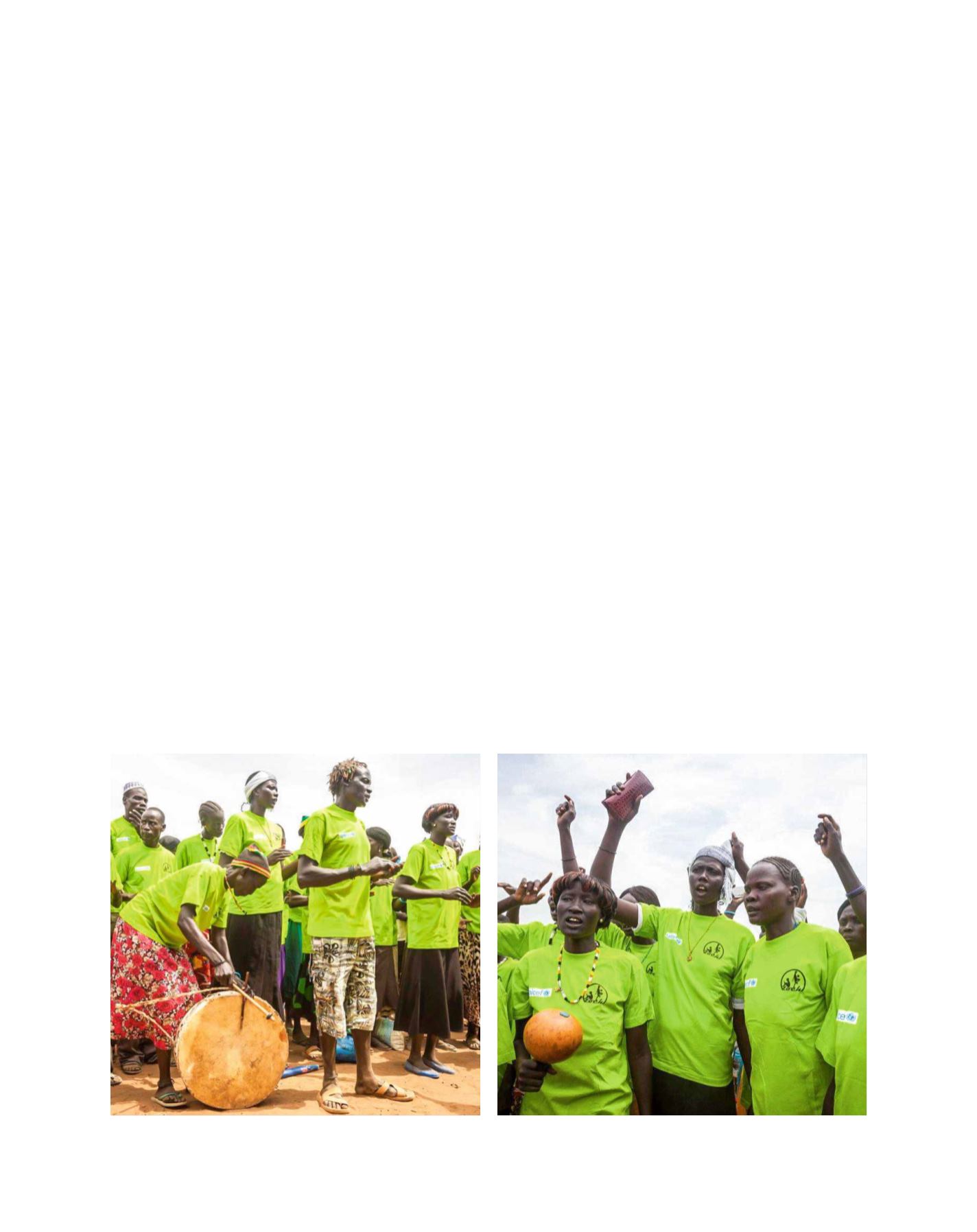

[
] 39
How it works
The Communities Care programme aims to create healthier,
safer and more peaceful communities for women and girls by
working to improve access to care and support for survivors
of sexual violence, and to transform harmful social norms
that uphold violence against women and girls into norms that
promote dignity, equality and non-violence
2
. This is done
through a two-pronged approach: 1) guiding local service
providers from the health, education, and justice sectors
through reflection and training to improve their knowledge,
attitudes and skills related to working with survivors of GBV,
and 2) facilitating dialogue among key community members
to prevent and respond to violence against women and girls.
More specifically, in collaboration with programme staff,
including local Community Discussion Leaders and service
providers, communities are guided through a 16-week process
by a toolkit that supports them to implement a six-step
pathway to change:
•
Step 1:
Strengthen community-based care and support
for GBV survivors – including health, psychosocial, law
enforcement and education services – by addressing gaps
in services, identifying barriers to access, and providing
training and mentoring for providers on sexual violence,
social norms, self-awareness and survivor-centred care.
•
Step 2:
Reflect and raise awareness in the community
about harmful beliefs and norms that foster sexual
violence, as well as positive community values that
contribute to healthy, safe and peaceful communities.
This step requires identifying community members who
can act as agents of change.
•
Step 3:
Through facilitated discussions, explore and
choose alternative practices that promote non-violent
and respectful relationships between men and women,
identifying both immediate and long-term changes that
can be made.
•
Step 4:
Commit to taking action to prevent sexual
violence. The programme supports community members
in understanding the collective benefits of promoting
change and organizing public actions that demonstrate
their commitment to non-violence.
•
Step 5:
Communicate positive norms with others in and
beyond the community. Making these changes visible
reinforces that change is possible, is happening – and can
be contagious!
•
Step 6:
Build an environment that supports the
community in sustaining change, including by
advocating for laws, policies and other mechanisms
that support new practices and behaviours, address
violations, and strengthen the capacity of institutions to
provide care for survivors.
At the time of writing, UNICEF’s Communities Care
programme is being piloted and tested in conflict-affected
communities in Somalia and South Sudan, in partnership
with local and international organizations as well as research-
ers at Johns Hopkins University. In each country, there are
communities that receive the programme, and communities
that serve as ‘comparison’ communities that do not receive
the programme right away. This approach allows us see
clearly whether the programme is truly successful in trans-
forming norms and preventing and delivering compassionate
responses to GBV. Through this research, UNICEF and Johns
Hopkins University are pioneering tools to better understand
and measure social norms and their effects on communities.
These tools are intended to be useful to any organization that
wants to test the impact of programmes aiming to transform
negative social norms and behaviours related to preventing
and responding to sexual and related forms of violence.
While evaluation results are not yet in, the below case study
from South Sudan highlights early insights into programme
Community members perform a skit challenging ideas of education and household norms during the launch of the CC programme in Gogrial West, South Sudan
Images: UNICEF/Adriane Ohanesian 2015
G
ender
E
quality
and
W
omen
’
s
E
mpowerment
















